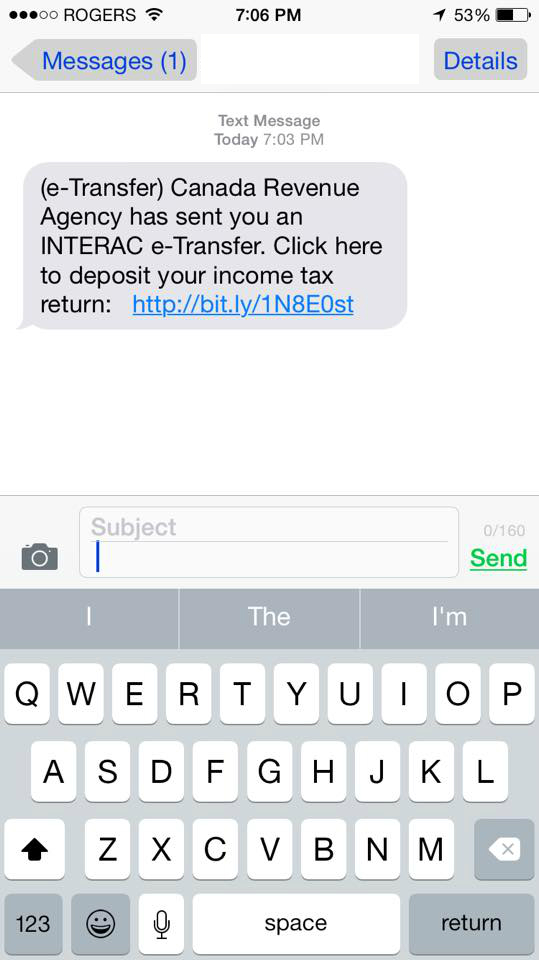Do you or a family member have a disability? Are you markedly restricted in performing day to day activities?
If you answered yes to these questions, you may be entitled to receive a tax credit. The following guide has a wealth of information to help you determine whether or not you or a family member would qualify to claim the Disability Tax Credit.
http://www.cra-arc.gc.ca/E/pub/tg/rc4064/rc4064-15e.pdf
Have you been approached by a company that says they can get you thousands of dollars in tax refunds and grants if you qualify for the Disability Tax Credit?
There are a number of these companies popping up nationwide that offer to help you fill out the appropriate forms to apply for the Disability Tax Credit, setup a Registered Disability Savings Plan (RDSP) and help you apply for the Canada Disability Savings Grant for a fee of about 20 – 30% of the proceeds that you are entitled to receive.
For example, if you qualify for the tax credit for a 10 year period you could receive up to $1,800 per year for a total of $18,000. Based on the 20 - 30% fee schedule you would lose between $3,600 to $5,400 of your tax credit. The Federal government has taken steps to help disabled taxpayers apply for the DTC without paying huge fees. Form T2201 has been revised and asks you if you want the CRA to automatically adjust all years, whereas in the past your accountant had to file T1 adjustment requests. So the process of applying for the DTC is now greatly simplified and you shouldn’t need to incur significant accounting fees to apply and claim the DTC.
To apply for the Disability Tax Credit and save thousands of dollars in fees just follow these simple steps:
- If you feel that either you or your family member should qualify for the Disability Tax Credit, take the first step and download the attached T2201 form.http://www.cra-arc.gc.ca/E/pbg/tf/t2201/t2201-15e.pdf
- Complete the sections of Part A that apply to you.
- Make sure you check the box in Section 3 – “Yes, I want the CRA to adjust my returns if possible.”
- Sign Section 4
- Make an appointment to see your doctor. This should be a medical professional who has detailed knowledge of your medical history. Be sure to bring the T2201 form with you to your doctor’s appointment but BEFORE you give it to your doctor or mention that you have the form, ask for your doctor’s verbal opinion about whether he feels you would qualify for the Disability Tax Credit. If the doctor believes you should qualify for the tax credit then ask your doctor to fill out the T2201 form. No sense in paying to have the form completed if you aren’t going to qualify. The doctors charge a nominal fee of $50 - $150 to fill out the form.
- Before you leave the doctor’s office double check the section that the doctor has completed to see that he has indicated that you are markedly restricted in any of the areas and has indicated the year that you became disabled. To qualify for the DTC this information must be provided by the doctor and sometimes the information regarding the year of the onset of the disability is overlooked.
- When the completed the form is ready to be sent to CRA for processing, take a photocopy of the form for your file and mail the original to CRA at one of the addresses on page 6 of the form.
Please note that to receive the DTC you or a supporting family member must have paid income tax during the period of disability. For example if you are collecting Social Assistance, WCB, or have had annual income less than $10,000 chances are you would not have paid any tax and would not receive a refund. However, if you have a supporting person, ie spouse, parent, or a child (in the case of an elderly parent) and that person has paid tax during your period of disability then your DTC can transfer to that person.
If you paid minimal or no tax during the period of disability Section 2 of the T2201 can be filled out by your supporting person to enable your DTC to transfer to him/her. By checking the box in Section 3 CRA can adjust all of the applicable years for your supporting person.
When you receive your refund cheque you may want to consider investing into a Registered Disability Savings Plan. Details regarding this plan are available at
http://www.cra-arc.gc.ca/rdsp/
If you have questions or encounter issues with your DTC application you can ask your accountant to assist you. If you have followed all of the steps listed above and gotten to the point of mailing in your application, you have already saved on your accounting fees.


 source:
source: 

